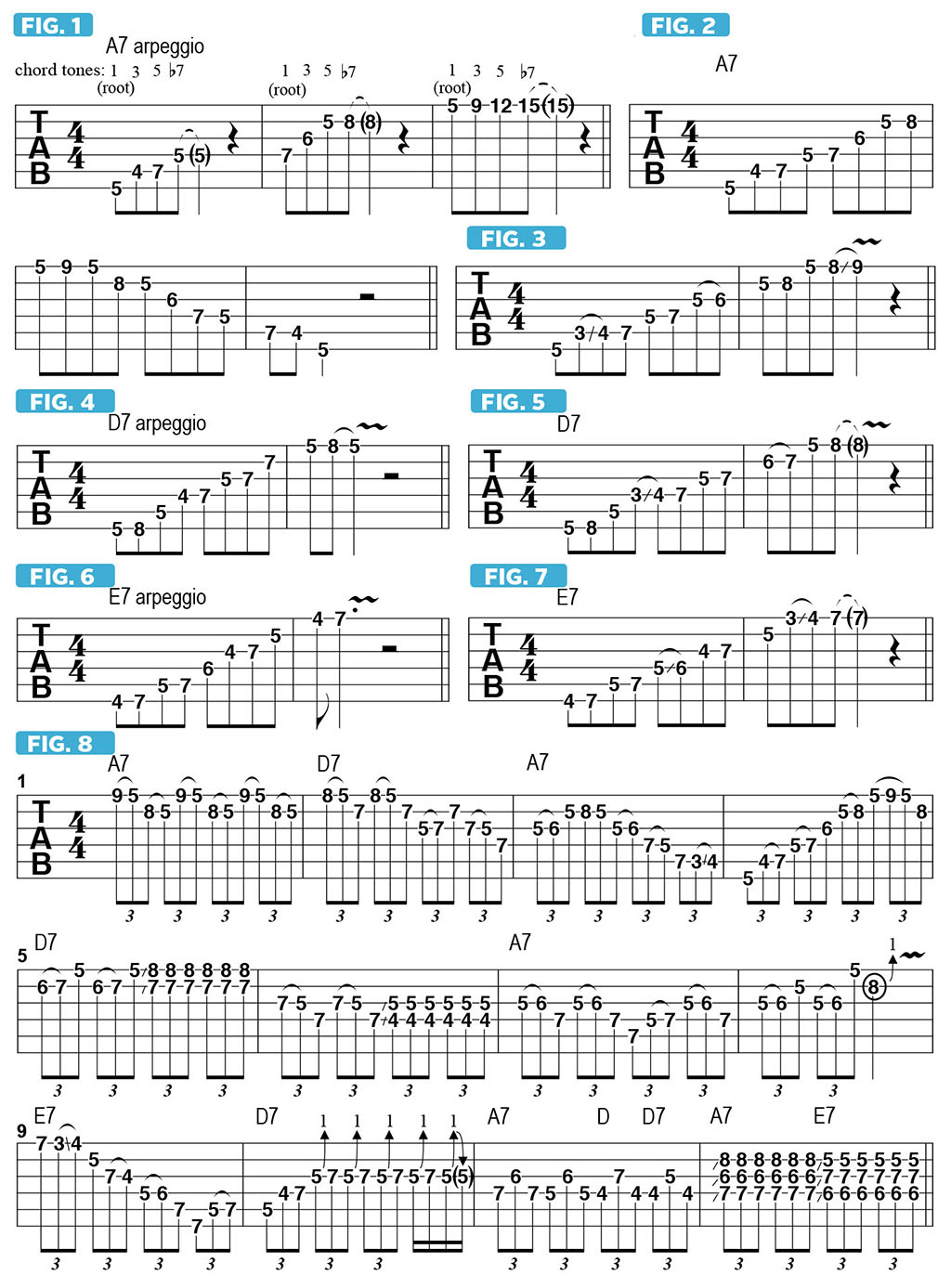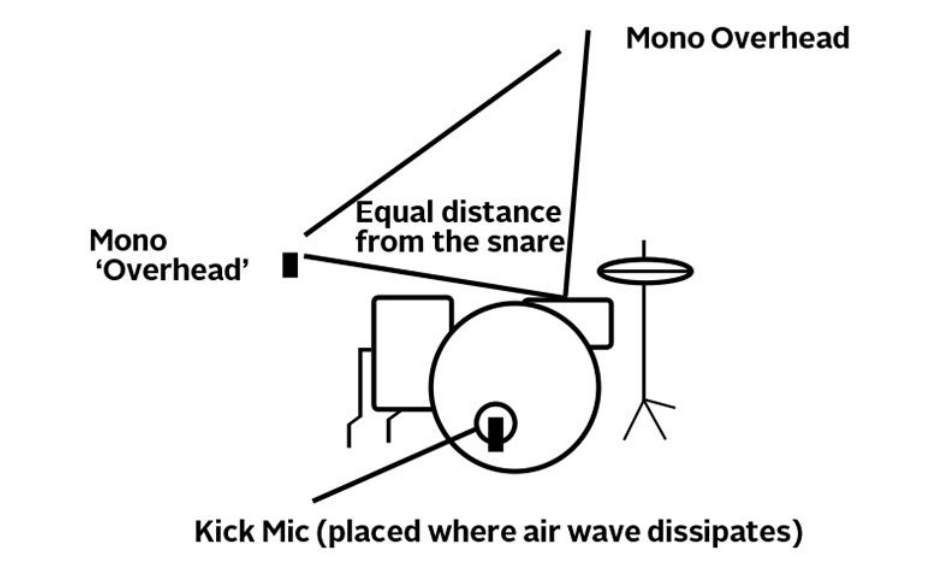How to Use Dominant Seven Arpeggios in Blues-Based Soloing
Incorporating dominant seven arpeggios into your improvised lines is a simple way to expand note-choice possibilities.
No study of rock guitar would be complete without an examination of blues and blues guitar techniques. Many rock guitar players have a tendency to rely solely on minor and major pentatonic scales when playing blues. Don’t get me wrong — I absolutely love using pentatonics — but there are a variety of other options one can take advantage of to broaden the musical landscape while improvising over blues-based progressions.
A simple way to expand our note-choice possibilities is to incorporate dominant seven arpeggios into our improvised lines. Most blues and rock songs occur within a “dominant” musical environment, meaning the majority of the chords are dominant seven chords, for example, A7, D7 and E7.
FIGURE 1 outlines the four notes of an A7 arpeggio, A C# E G, as shown across three octaves. FIGURE 2 illustrates the standard A7 arpeggio as played across two and a half octaves while remaining in fifth position.
A melodic devide used by all blues guitarists is to make use of both the minor and the major third while soloing. The shift from the minor to the major third functions as a resolution from the minor sound of the “b3” to the major/dominant sound of the maj3. FIGURE 3 illustrates the A7 arpeggio with the b3, C, added, resulting in the ascending pattern A C C# E G, which is repeated across one and a half more octaves.
A standard 12-bar blues progression in the key of A includes the chords A7, D7 and E7, so let’s now apply this approach to both the D7 and E7 chords. FIGURE 4 illustrates a standard D7 arpeggio (D F# A C). The minor third of D is F, so if we add that F note to this D7 arpeggio, we get what is shown in FIGURE 5, D F F# A C, with the five notes repeated an octave higher. Notice that this example begins with two pick-up notes, A and C.

An E7 arpeggio consists of the notes E G# B D, as shown in FIGURE 6. In FIGURE 7, we incorporate the minor third, G, resulting in an ascending pattern of E G G# B D. Here, three pick-up notes are added at the start of the phrase, in this case G#, B and D.
Now let’s combine all of these patterns into a 12-bar solo, as presented in FIGURE 8. Over the initial A7 chord, I play a repeating, descending figure built from the notes C# A G E. In bar 2, where we shift to the four chord, D7, and I begin by simply lowering the C# note to C, and the G to F#, yielding the notes C A F#, all of which are part of a D7 arpeggio. When we return to A7 in bar 3, I repeatedly utilize the technique of “rolling” from the minor third, C, to the major third, C#. I then apply this approach to each chord as the progression continues.
This is my final School of Rock column for the time being. So I thank you for reading, and I hope the columns have been useful to you in your musical endeavors. See you on the road!
New York City guitarist Joel Hoekstra plays for Whitesnake, the Trans-Siberian Orchestra, Cher and his own side project, Joel Hoekstra’s 13, whose latest release is Dying to Live. Find out more at joelhoekstra.com.
Get The Pick Newsletter
All the latest guitar news, interviews, lessons, reviews, deals and more, direct to your inbox!










![Joe Bonamassa [left] wears a deep blue suit and polka-dotted shirt and plays his green refin Strat; the late Irish blues legend Rory Gallagher [right] screams and inflicts some punishment on his heavily worn number one Stratocaster.](https://cdn.mos.cms.futurecdn.net/cw28h7UBcTVfTLs7p7eiLe.jpg)
